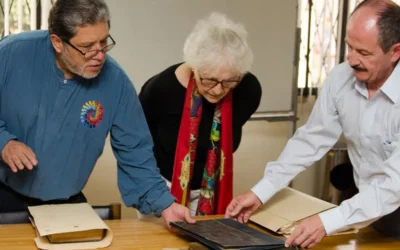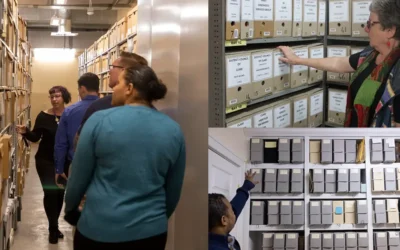Archives & Item-Level Description: An Integrated Approach
Margot Note
Traditionally, archivists have dismissed arrangement at the item level as having little utility and being impractical for modern collections. However, archival surveys conducted over the years have found that a significant proportion of archivists have adhered to item-level description—even though it is contrary to the traditional archival practice of collection-level description. The same discrepancy between literature and practice appears to be true for visual collections.
Item-level description is more common with visual materials than with textual materials. Conventional processing techniques for pictorial collections presuppose that photographs must be treated individually. Archivists must evaluate their visual collections to determine if item-level description is warranted. Sometimes, it is unavoidable.
Possible Descriptors for Archival Materials
The number of descriptors for archival materials (at the item or collection level) abound. They may include:
- Titles of the collections or items
- Names of the persons or organizations who created, accumulated, or maintained the items, including variant names and pseudonyms
- Subjects or themes
- Functions, activities, or roles for which the items were created, used, and assembled
- Date(s) of creation
- Geographic terms identifying place names or physical features
- Relationships with other organizations or persons
- Quantity or extent
- Formats
- Size
Hierarchical Description: Is it Possible?
It is difficult to apply traditional hierarchical description to visual materials. Item-level description of photographs, indexed by subject and credited to the photographer, but without adequate contextual information about their origins and provenance (or links to such contextual information), transforms photographic archives into stock photo libraries. Itemizing images in this way reduces photographs to their visible elements and conflates photographic content and photographic meaning. Images of enduring value are more than just what they picture; they provide a window to the past.
The diverse array of information that can appear within a single photographic image suggests that the most effective access is provided through description at the item level, in spite of the overwhelming strain on financial and human resources that such an approach entails. Although it is time-consuming, item-level description makes images searchable, and, with digital images, viewable without having to retrieve the originals. However, resources are seldom adequate to catalog all collections to the item level, and item-level handling should exist within a framework provided by collection-level description. Repositories with limited budgets may digitize one or two representative images while noting that there are additional unscanned images.
The Importance of Linking
Ideally, an adequate amount of information should be provided for each image. Also, the image should be searchable by subject, through subject headings or keywords. Linked item-level records can provide the most information and are the most searchable, both within and among collections. However, due to the labor involved, linking may be impractical for sustained digitizing initiatives of collections of any significant size.
An Integrated Approach
As archivists, we should have an integrated approach to digital initiatives, from selection to description, from access to preservation, with an emphasis on the intersection of cultural objectives and practical digital applications.
While photographs are used increasingly to support a broad range of research topics, their management remains far from standardized. Like images themselves, image description begins with an understanding of context. There is no right way to manage images, only best practices that inform decisions based on the reasons for digitizing, the nature of the images, the institutional mission, available resources, the technical infrastructure, and user requirements.
Margot Note
Similar Posts
Enhancing Collaboration; Methods for Archivists
Archivists can enhance collaboration through user-centric approaches and efficient processing methods based on customer service principles.
Navigating Selection in Archival Practice
The archival selection process is far from straightforward, given the limitations of long-term preservation and ongoing accessibility challenges.
Responsible Stewardship in Archival Practice
Responsible stewardship is a philosophy that guides the actions and decisions of archivists in safeguarding collective memory.
A Modern View of a City’s History via ArchivEra
Brief success story on City of Regina Archives’ use of ArchivEra to manage collections of legal, historical, administrative or financial significance
Hosting service
Enjoy all of the benefits of your Lucidea solution with secure, reliable, stress free hosting
Programs & incentives
No matter your size or budget, we’ve got you covered, today and tomorrow



